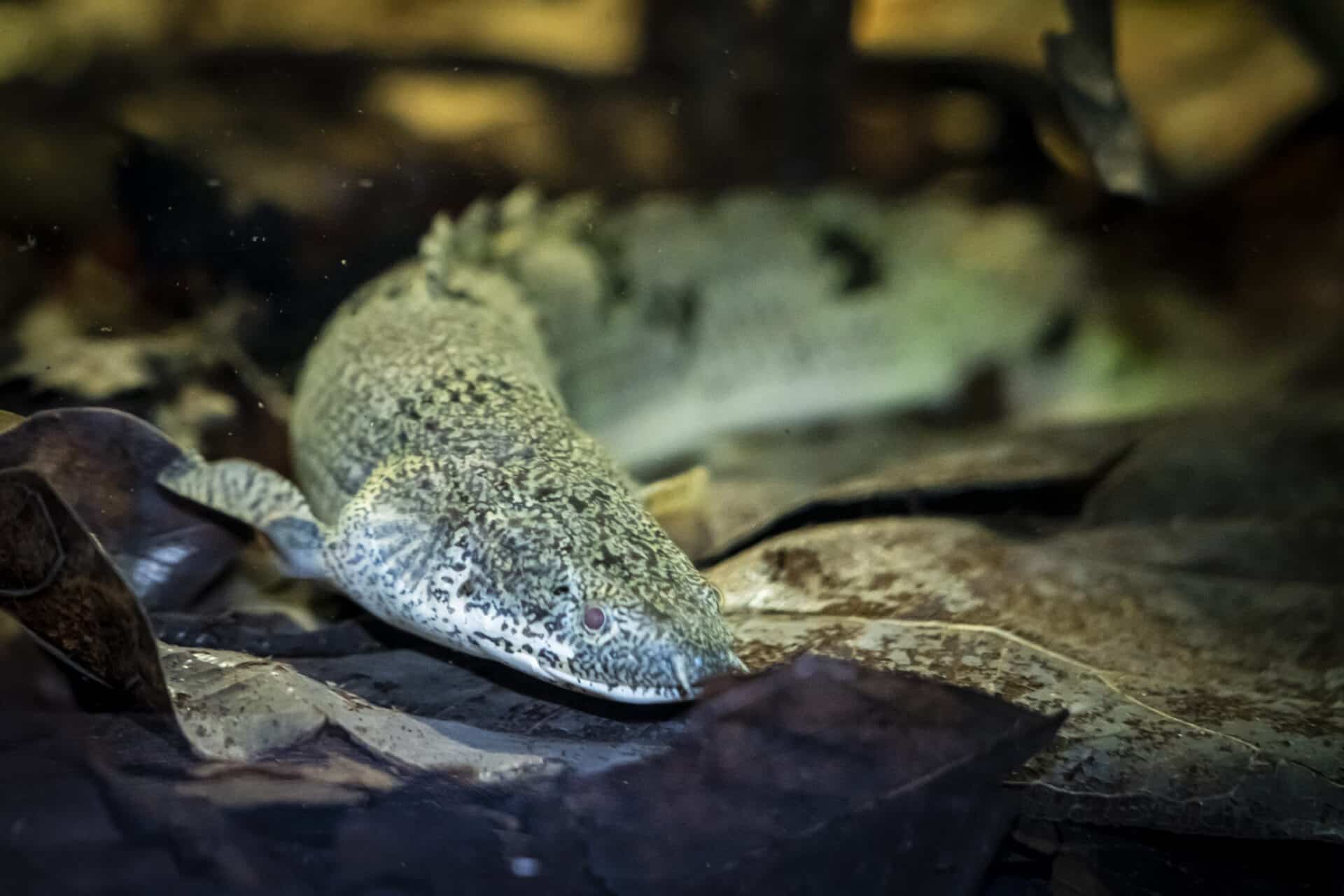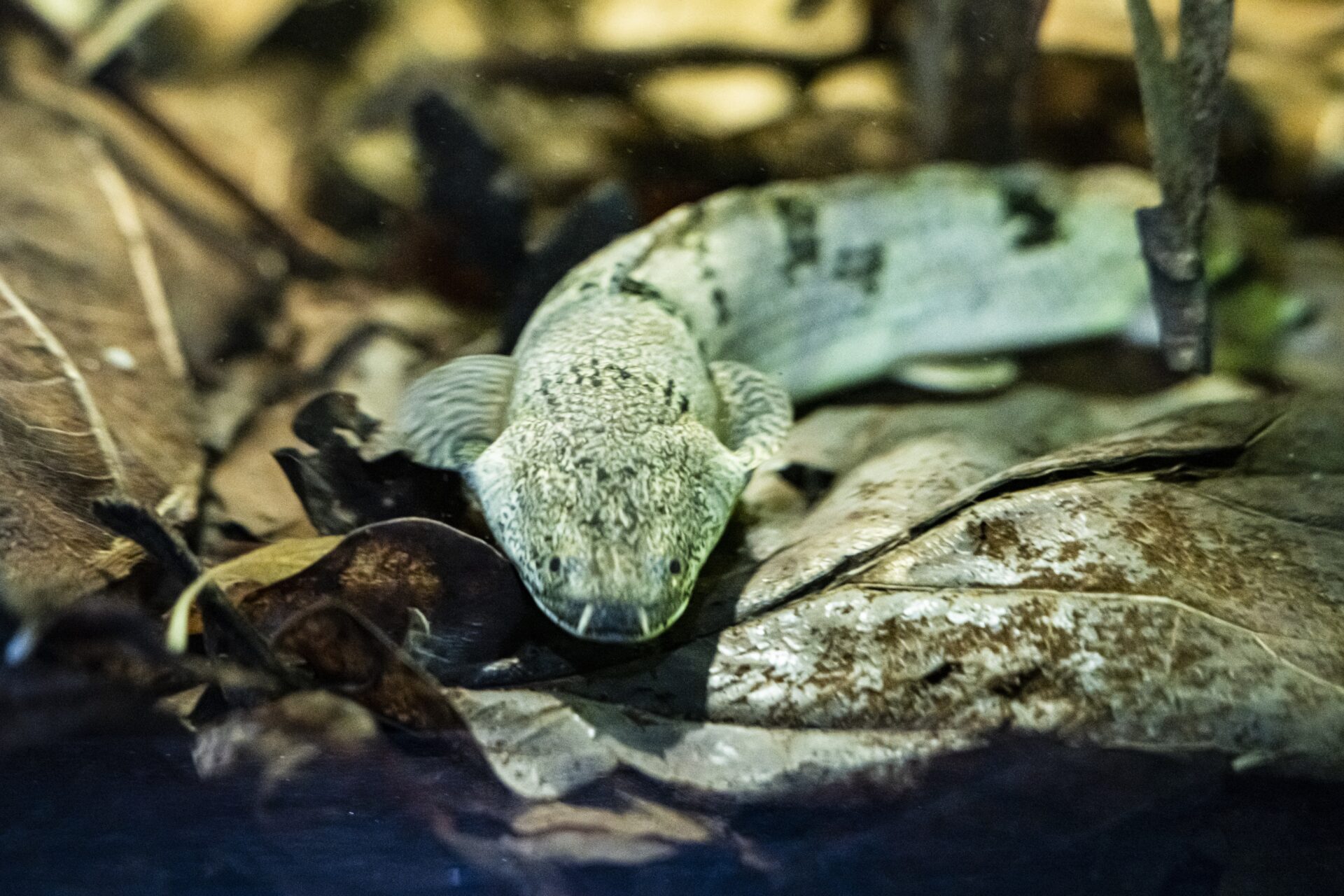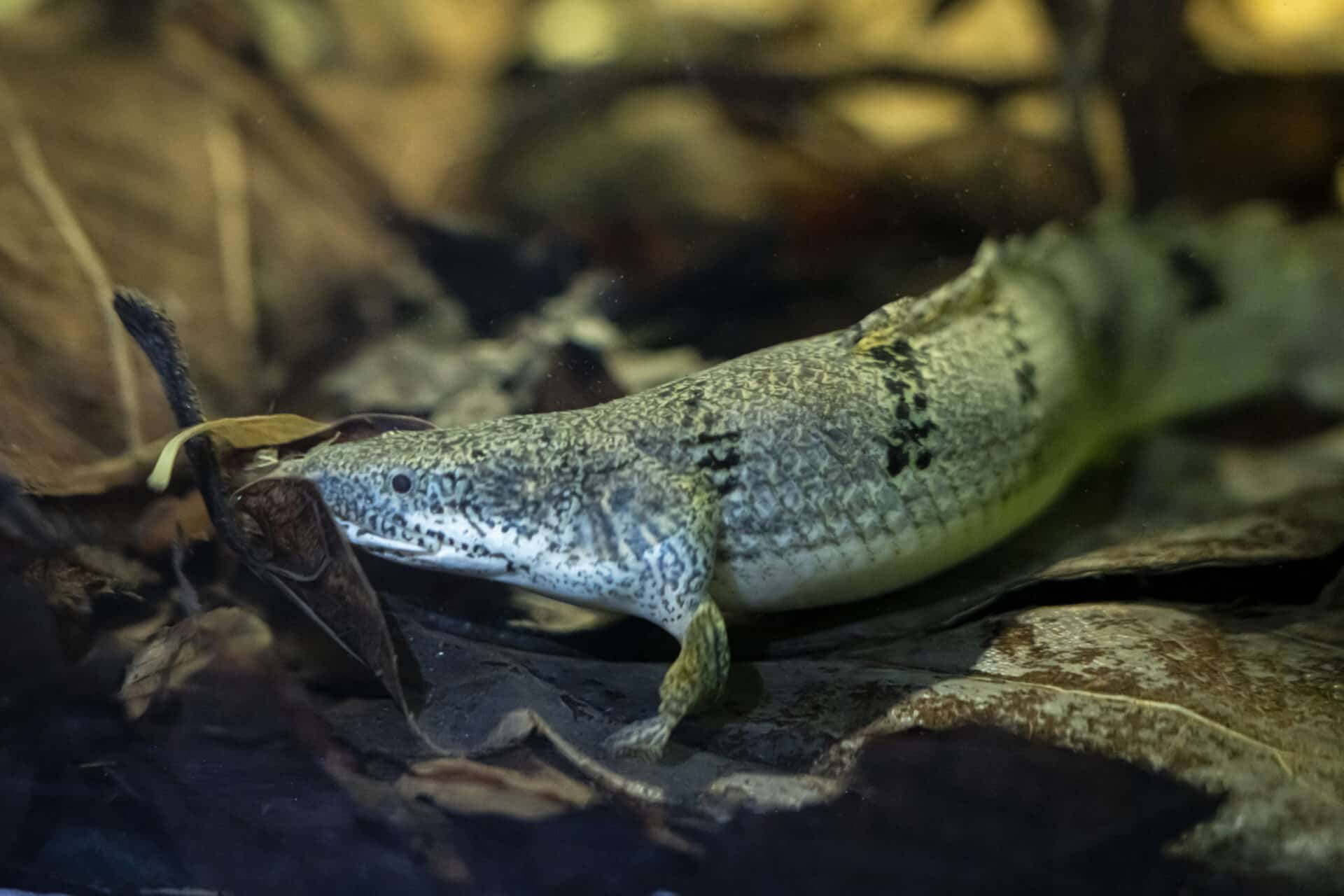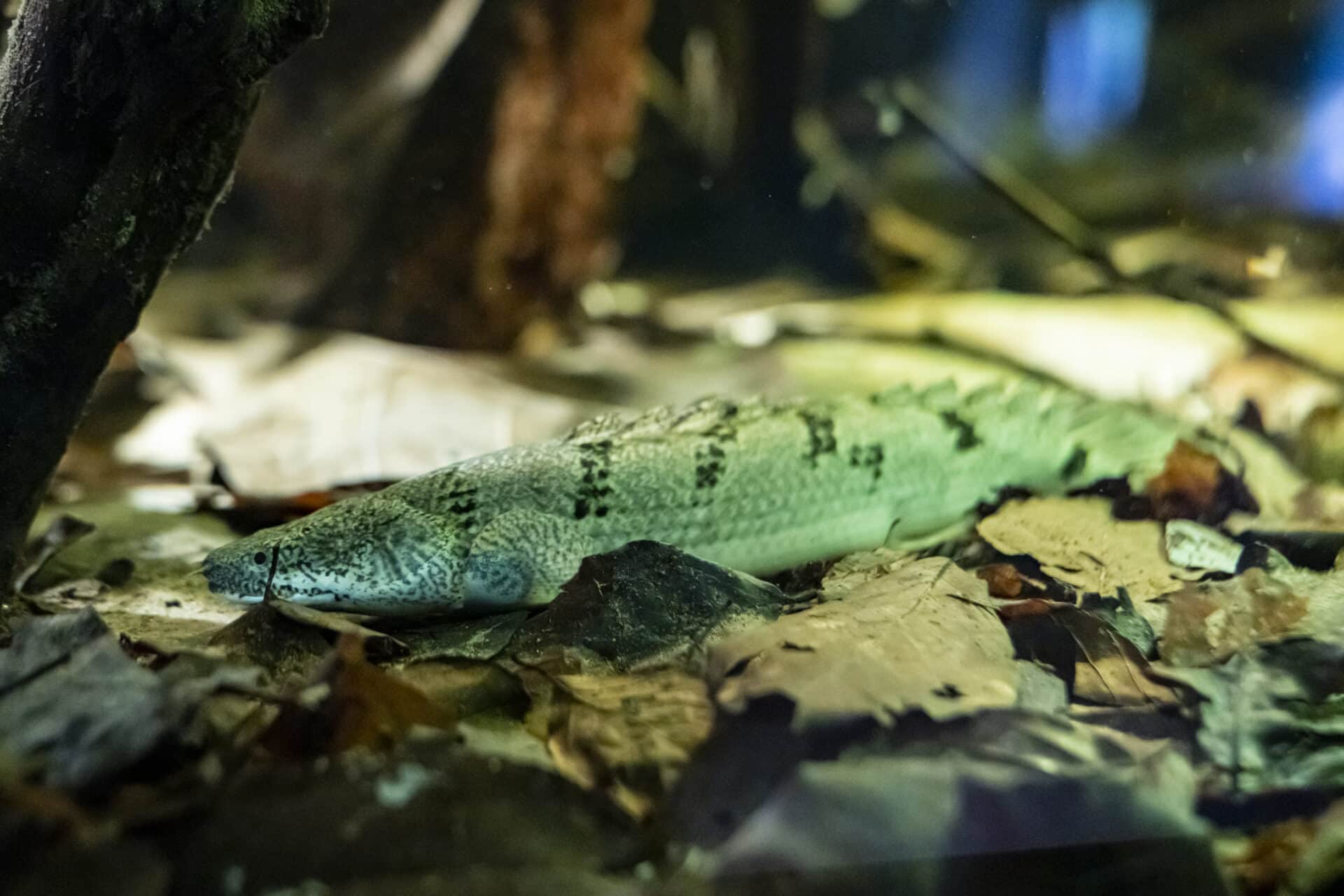Barred bichir
Common Name: Barred bichir
Scientific Name: Polypterus delhezi
Unlike most fish species, barred bichirs can breathe air. They have a modified swim bladder which acts like a set of lungs so they can survive outside of the water for short periods of time. They are a ray-finned fish capable of moving on land by ‘walking’ on their pectoral fins.
Known as a living fossil, this species dates back over 400 million years and retains the body structure like that of prehistoric fish. The scales of the bichir are covered in ‘ganoin’ a substance similar to the enamel on teeth.
Individual scales vary in size and shape and interlock to create a flexible, articulated exoskeleton to protect the elongated body of the bichir. The study of the unique peg and socket connection between their scales has provided the biodesign template for the development of a new biomimetic armour called MetaMesh.
Fast Facts
-
Status
Least concern
-
Size
44cm
-
Weight
up to 4kg
-
Gestation
eggs hatch within 3-4 days
-
Young
several hundred
-
Life span
10 - 15 years
In the wild
Barred bichir are a carnivorous, predatory fish, they will eat worms, insects and any fish small enough to fit in their mouth, including their own fry. Living in muddy waters they have poor eyesight so hunt using their keen sense of smell.
Found in the Central Congo River basin, the barred bichir inhabits freshwater streams, lakes, and flood zones. As it is air-breathing, the bichir can survive periods on land so long as the land remains moist and doesn’t completely dry out. Primarily nocturnal, barred bichir spend the day hiding under rocks.
Barred bichirs are usually solitary and territorial. They usually breed in the rainy season. Males will chase females and have been seen headbutting them in courtship before breeding. The female will lay eggs into the cupped caudal fins of the male, who scatters the eggs amongst vegetation once fertilized.
The size and location of these poor-sighted fish makes them relatively easy to catch as a local food source for people living and visiting the Congo. Barred bichir are also predated by large water birds such as heron, stork, and pelican.
There are no conservation measures in place to protect barred bichir because they are widespread across the whole of central Africa where they are found in large numbers. There are currently no significant threats to population numbers of barred bichir.



